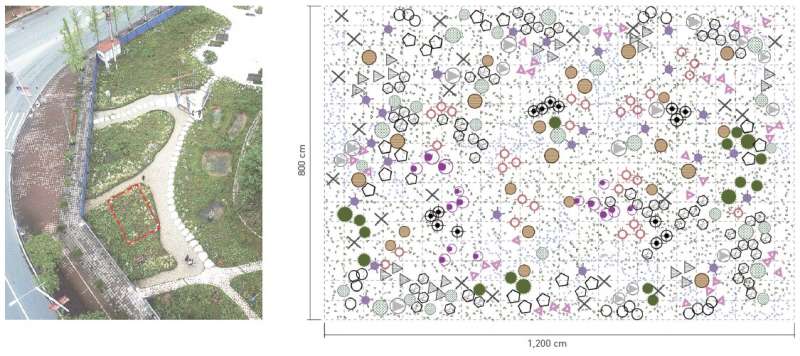This article has been reviewed according to Science X's editorial process and policies. Editors have highlighted the following attributes while ensuring the content's credibility:
fact-checked
proofread
Herbaceous planting for ecological restoration of urban land based on mechanisms of the assembly of plant communities

Brownfield restoration has become a frontier topic in the research on urban ecosystem governance. Optimizing brownfield ecosystems through proper bioremediation approaches can provide urban landscapes and habitats with sound ecological potentials. Currently, the lagging theory and technique development of brownfield vegetation restoration, the species selection based on single causality, and the neglect of community structure and ecological functions formation have become major bottlenecks of brownfield restoration.
Introducing the mechanisms of the assembly of plant communities for theoretical support, this paper proposes a novel technical framework of herbaceous planting for the ecological restoration of urban brownfields, which includes micro-topographic design, adaptive species selection, symbiosis structure design, building quasi-nature community structure, and in-situ planting.
This research selected a brownfield site located in Hechuan District, Chongqing City for the application of the herbaceous planting, and evaluated the ecological benefits after restoration. Results showed that severely degraded brownfield vegetation has turned into an herbaceous community with a multi-species symbiosis and a stable structure, effectively optimizing its ecological functions such as stormwater retention and biodiversity conservation.
This research can provide scientific evidence and a referable technical paradigm for urban brownfield restoration, and also contribute to the enhancement of urban ecological networks and ecosystem resilience.
This research proposed a vegetation assembly pattern to promote the symbiosis of plants and animals by simulating natural community structure, and utilized the in-situ mixed-seed sowing combined with seedlings planting to establish a well-coexistent and self-maintained herbaceous community with improved biodiversity and appealing landscapes. The planting on the study area was implemented spanning from October 2017 to March 2018.
The ecological planting design of the brownfield in Senkai Road, Hechuan district, Chongqing City in this paper is an exploratory research addressing complicated environmental challenges in brownfields, including infertile soil, pollution, and malignant weeds. After restoration, the site that was vulnerable to environmental stress, overgrown with invasive species, and severely declined in species richness and ecosystem services now has turned into a healthy herbaceous community that provides functions such as runoff retention and biodiversity conservation with optimized structure and landscape aesthetics.
The proposed technical framework of herbaceous planting for the ecological restoration of urban brownfields—steps as micro-topographic design, adaptive species selection, symbiosis structure design, building quasi-nature community structure, and in-situ planting—is an innovative application case in China. This research aims to provide scientific evidences and a referable technical paradigm for brownfield habitat restoration, biodiversity conservation, and aesthetic promotion, in order to contribute to the improvement of urban ecological network and ecosystem resilience.
The research was published in Landscape Architecture Frontiers.
More information: Yuan, J. et al, Herbaceous Planting for Ecological Restoration of Urban Brownfields Based on Mechanisms of the Assembly of Plant Communities, Landscape Architecture Frontiers (2023). DOI: 10.15302/J-LAF-1-020069
Provided by Higher Education Press

















